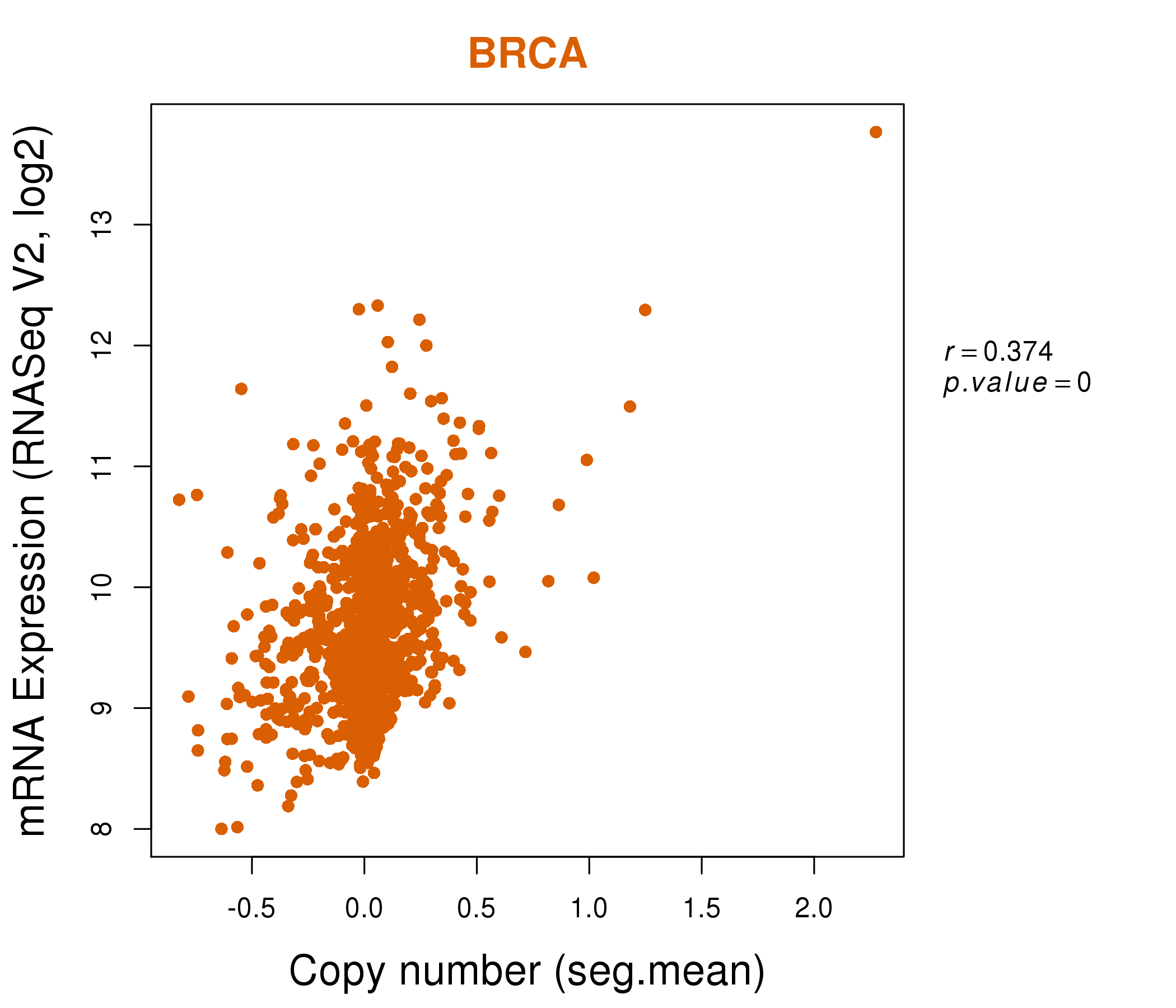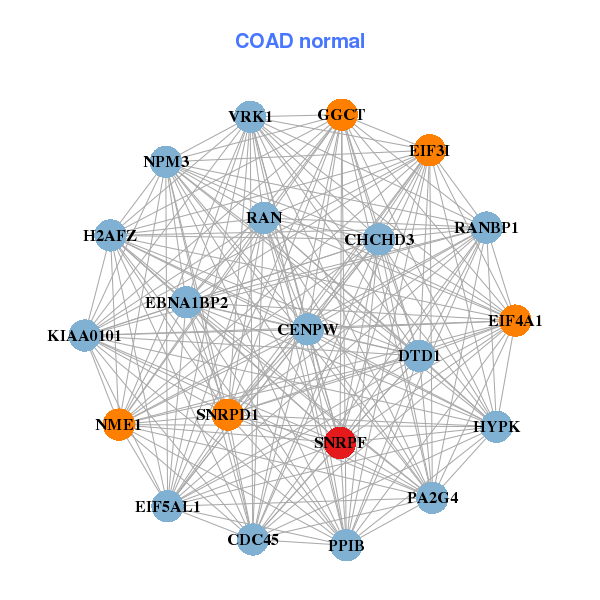|
|||||||||||||||||||||||||||||||||||||||||||||||||||||||||||||||||||||||||||||||||||||||||||||||||||||||||||||||||||||||||||||||||||||||||||||||||||||||||||||||||||||||||||||||||||||||||||||||||||||||||||||||||||||||||||||||||||||||||||||||||||||||||||||||||||||||||||||||||||
| |
| Phenotypic Information (metabolism pathway, cancer, disease, phenome) |
| |
| |
| Gene-Gene Network Information: Co-Expression Network, Interacting Genes & KEGG |
| |
|
| Gene Summary for SNRPF |
| Basic gene info. | Gene symbol | SNRPF |
| Gene name | small nuclear ribonucleoprotein polypeptide F | |
| Synonyms | SMF|Sm-F|snRNP-F | |
| Cytomap | UCSC genome browser: 12q23.1 | |
| Genomic location | chr12 :96252708-96260238 | |
| Type of gene | protein-coding | |
| RefGenes | NM_003095.2, | |
| Ensembl id | ENSG00000139343 | |
| Description | sm protein Fsmall nuclear ribonucleoprotein F | |
| Modification date | 20141207 | |
| dbXrefs | MIM : 603541 | |
| HGNC : HGNC | ||
| HPRD : 04645 | ||
| Protein | UniProt: go to UniProt's Cross Reference DB Table | |
| Expression | CleanEX: HS_SNRPF | |
| BioGPS: 6636 | ||
| Gene Expression Atlas: ENSG00000139343 | ||
| The Human Protein Atlas: ENSG00000139343 | ||
| Pathway | NCI Pathway Interaction Database: SNRPF | |
| KEGG: SNRPF | ||
| REACTOME: SNRPF | ||
| ConsensusPathDB | ||
| Pathway Commons: SNRPF | ||
| Metabolism | MetaCyc: SNRPF | |
| HUMANCyc: SNRPF | ||
| Regulation | Ensembl's Regulation: ENSG00000139343 | |
| miRBase: chr12 :96,252,708-96,260,238 | ||
| TargetScan: NM_003095 | ||
| cisRED: ENSG00000139343 | ||
| Context | iHOP: SNRPF | |
| cancer metabolism search in PubMed: SNRPF | ||
| UCL Cancer Institute: SNRPF | ||
| Assigned class in ccmGDB | C | |
| Top |
| Phenotypic Information for SNRPF(metabolism pathway, cancer, disease, phenome) |
| Cancer | CGAP: SNRPF |
| Familial Cancer Database: SNRPF | |
| * This gene is included in those cancer gene databases. |
|
|
|
|
|
| . | |||||||||||||||||||||||||||||||||||||||||||||||||||||||||||||||||||||||||||||||||||||||||||||||||||||||||||||||||||||||||||||||||||||||||||||||||||||||||||||||||||||||||||||||||||||||||||||||||||||||||||||||||||||||||||||||||||||||||||||||||||||||||||||||||||||||||||||
Oncogene 1 | Significant driver gene in | ||||||||||||||||||||||||||||||||||||||||||||||||||||||||||||||||||||||||||||||||||||||||||||||||||||||||||||||||||||||||||||||||||||||||||||||||||||||||||||||||||||||||||||||||||||||||||||||||||||||||||||||||||||||||||||||||||||||||||||||||||||||||||||||||||||||||||||||||||
| cf) number; DB name 1 Oncogene; http://nar.oxfordjournals.org/content/35/suppl_1/D721.long, 2 Tumor Suppressor gene; https://bioinfo.uth.edu/TSGene/, 3 Cancer Gene Census; http://www.nature.com/nrc/journal/v4/n3/abs/nrc1299.html, 4 CancerGenes; http://nar.oxfordjournals.org/content/35/suppl_1/D721.long, 5 Network of Cancer Gene; http://ncg.kcl.ac.uk/index.php, 1Therapeutic Vulnerabilities in Cancer; http://cbio.mskcc.org/cancergenomics/statius/ |
| REACTOME_METABOLISM_OF_NON_CODING_RNA REACTOME_METABOLISM_OF_RNA | |
| OMIM | |
| Orphanet | |
| Disease | KEGG Disease: SNRPF |
| MedGen: SNRPF (Human Medical Genetics with Condition) | |
| ClinVar: SNRPF | |
| Phenotype | MGI: SNRPF (International Mouse Phenotyping Consortium) |
| PhenomicDB: SNRPF | |
| Mutations for SNRPF |
| * Under tables are showing count per each tissue to give us broad intuition about tissue specific mutation patterns.You can go to the detailed page for each mutation database's web site. |
| There's no structural variation information in COSMIC data for this gene. |
| * From mRNA Sanger sequences, Chitars2.0 arranged chimeric transcripts. This table shows SNRPF related fusion information. |
| ID | Head Gene | Tail Gene | Accession | Gene_a | qStart_a | qEnd_a | Chromosome_a | tStart_a | tEnd_a | Gene_a | qStart_a | qEnd_a | Chromosome_a | tStart_a | tEnd_a |
| AA506495 | PLCD3 | 1 | 127 | 17 | 43189017 | 43189143 | SNRPF | 126 | 402 | 12 | 96258132 | 96258409 | |
| BU564668 | SNRPF | 39 | 119 | 12 | 96259829 | 96259909 | TRIM28 | 113 | 174 | 19 | 59062017 | 59062078 | |
| Top |
| Mutation type/ Tissue ID | brca | cns | cerv | endome | haematopo | kidn | Lintest | liver | lung | ns | ovary | pancre | prost | skin | stoma | thyro | urina | |||
| Total # sample | 1 | |||||||||||||||||||
| GAIN (# sample) | ||||||||||||||||||||
| LOSS (# sample) | 1 |
| cf) Tissue ID; Tissue type (1; Breast, 2; Central_nervous_system, 3; Cervix, 4; Endometrium, 5; Haematopoietic_and_lymphoid_tissue, 6; Kidney, 7; Large_intestine, 8; Liver, 9; Lung, 10; NS, 11; Ovary, 12; Pancreas, 13; Prostate, 14; Skin, 15; Stomach, 16; Thyroid, 17; Urinary_tract) |
| Top |
|
 |
| Top |
| Stat. for Non-Synonymous SNVs (# total SNVs=2) | (# total SNVs=1) |
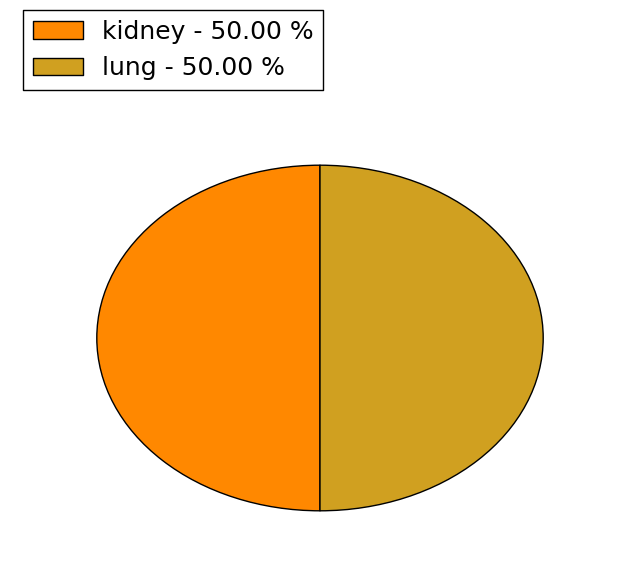 | 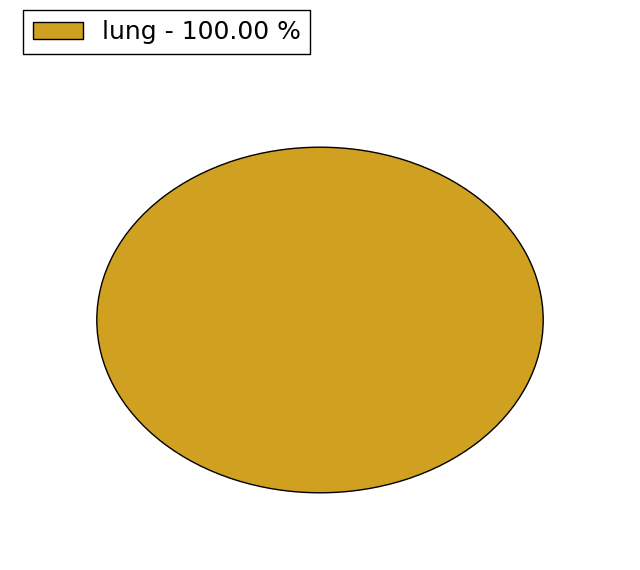 |
(# total SNVs=0) | (# total SNVs=0) |
| Top |
| * When you move the cursor on each content, you can see more deailed mutation information on the Tooltip. Those are primary_site,primary_histology,mutation(aa),pubmedID. |
| GRCh37 position | Mutation(aa) | Unique sampleID count |
| chr12:96259108-96259108 | p.N46D | 1 |
| chr12:96259135-96259135 | p.L55L | 1 |
| chr12:96259141-96259141 | p.G57R | 1 |
| Top |
|
 |
| Point Mutation/ Tissue ID | 1 | 2 | 3 | 4 | 5 | 6 | 7 | 8 | 9 | 10 | 11 | 12 | 13 | 14 | 15 | 16 | 17 | 18 | 19 | 20 |
| # sample | 1 | 1 | 1 | 1 | ||||||||||||||||
| # mutation | 1 | 1 | 1 | 1 | ||||||||||||||||
| nonsynonymous SNV | 1 | 1 | ||||||||||||||||||
| synonymous SNV | 1 | 1 |
| cf) Tissue ID; Tissue type (1; BLCA[Bladder Urothelial Carcinoma], 2; BRCA[Breast invasive carcinoma], 3; CESC[Cervical squamous cell carcinoma and endocervical adenocarcinoma], 4; COAD[Colon adenocarcinoma], 5; GBM[Glioblastoma multiforme], 6; Glioma Low Grade, 7; HNSC[Head and Neck squamous cell carcinoma], 8; KICH[Kidney Chromophobe], 9; KIRC[Kidney renal clear cell carcinoma], 10; KIRP[Kidney renal papillary cell carcinoma], 11; LAML[Acute Myeloid Leukemia], 12; LUAD[Lung adenocarcinoma], 13; LUSC[Lung squamous cell carcinoma], 14; OV[Ovarian serous cystadenocarcinoma ], 15; PAAD[Pancreatic adenocarcinoma], 16; PRAD[Prostate adenocarcinoma], 17; SKCM[Skin Cutaneous Melanoma], 18:STAD[Stomach adenocarcinoma], 19:THCA[Thyroid carcinoma], 20:UCEC[Uterine Corpus Endometrial Carcinoma]) |
| Top |
| * We represented just top 10 SNVs. When you move the cursor on each content, you can see more deailed mutation information on the Tooltip. Those are primary_site, primary_histology, mutation(aa), pubmedID. |
| Genomic Position | Mutation(aa) | Unique sampleID count |
| chr12:96254999 | p.V19V | 1 |
| chr12:96259108 | p.N46D | 1 |
| chr12:96259135 | p.L55L | 1 |
| chr12:96259141 | p.G57R | 1 |
| * Copy number data were extracted from TCGA using R package TCGA-Assembler. The URLs of all public data files on TCGA DCC data server were gathered on Jan-05-2015. Function ProcessCNAData in TCGA-Assembler package was used to obtain gene-level copy number value which is calculated as the average copy number of the genomic region of a gene. |
 |
| cf) Tissue ID[Tissue type]: BLCA[Bladder Urothelial Carcinoma], BRCA[Breast invasive carcinoma], CESC[Cervical squamous cell carcinoma and endocervical adenocarcinoma], COAD[Colon adenocarcinoma], GBM[Glioblastoma multiforme], Glioma Low Grade, HNSC[Head and Neck squamous cell carcinoma], KICH[Kidney Chromophobe], KIRC[Kidney renal clear cell carcinoma], KIRP[Kidney renal papillary cell carcinoma], LAML[Acute Myeloid Leukemia], LUAD[Lung adenocarcinoma], LUSC[Lung squamous cell carcinoma], OV[Ovarian serous cystadenocarcinoma ], PAAD[Pancreatic adenocarcinoma], PRAD[Prostate adenocarcinoma], SKCM[Skin Cutaneous Melanoma], STAD[Stomach adenocarcinoma], THCA[Thyroid carcinoma], UCEC[Uterine Corpus Endometrial Carcinoma] |
| Top |
| Gene Expression for SNRPF |
| * CCLE gene expression data were extracted from CCLE_Expression_Entrez_2012-10-18.res: Gene-centric RMA-normalized mRNA expression data. |
 |
| * Normalized gene expression data of RNASeqV2 was extracted from TCGA using R package TCGA-Assembler. The URLs of all public data files on TCGA DCC data server were gathered at Jan-05-2015. Only eight cancer types have enough normal control samples for differential expression analysis. (t test, adjusted p<0.05 (using Benjamini-Hochberg FDR)) |
 |
| Top |
| * This plots show the correlation between CNV and gene expression. |
: Open all plots for all cancer types
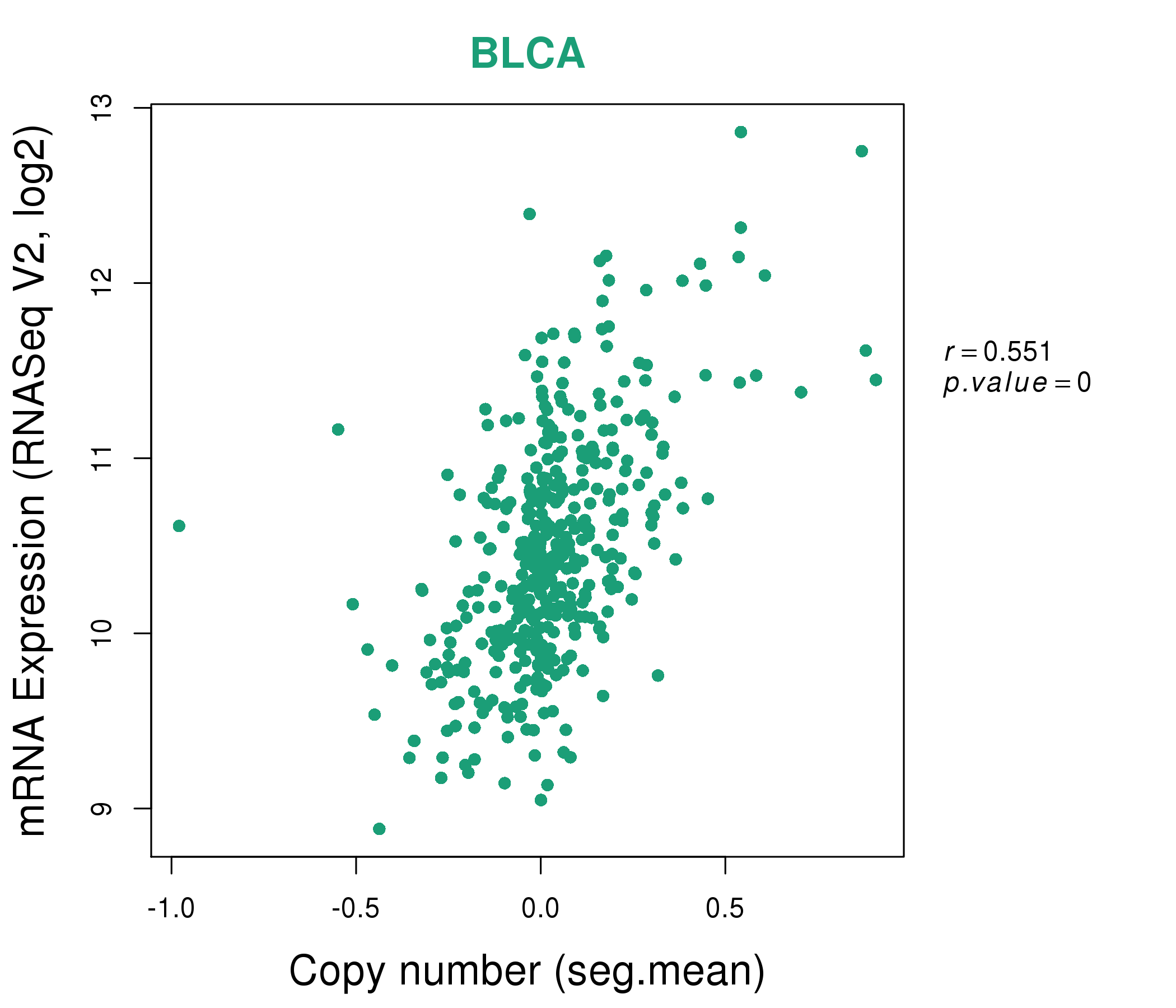 |
|
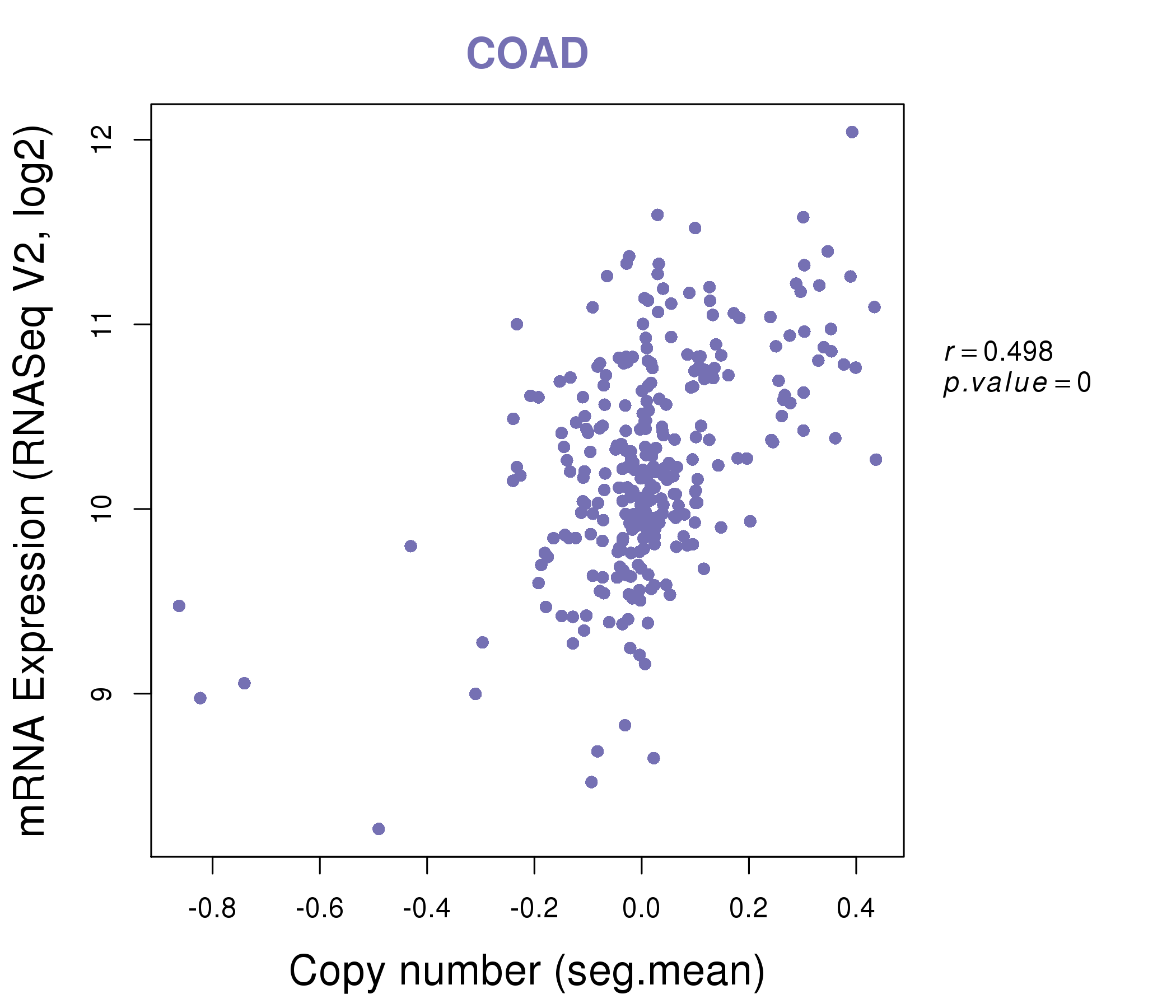 |
|
| Top |
| Gene-Gene Network Information |
| * Co-Expression network figures were drawn using R package igraph. Only the top 20 genes with the highest correlations were shown. Red circle: input gene, orange circle: cell metabolism gene, sky circle: other gene |
: Open all plots for all cancer types
 |
|
| BANF1,BOLA3,C12orf45,SLIRP,C19orf53,CCDC58,CCDC59, DYNLL1,NDUFA12,NDUFS5,NUTF2,PFDN6,PPP1R14B,PSMB7, SHFM1,SNRPA,SNRPF,SNRPG,SSBP1,UBE2N,USMG5 | CNPY2,CUTA,DIABLO,ETHE1,LSM2,MED27,NHP2, NHP2L1,PFDN5,PHF5A,PPIA,PPIH,RAB34,RANBP1, RPL24,RPL27A,RPLP1,SNRPD2,SNRPF,SSR2,UBE2I |
 |
|
| LBHD1___C11orf98,C12orf45,SLIRP,CCDC58,CCDC59,DIABLO,MAGOHB, METTL1,MRPL51,NDUFA12,NOP16,NUP37,NABP2,PA2G4, PUS1,RPL6,SRSF9,SNRPA,SNRPF,TOMM40,UBE2N | HYPK,CDC45,CENPW,CHCHD3,DTD1,EBNA1BP2,EIF3I, EIF4A1,EIF5AL1,GGCT,H2AFZ,KIAA0101,NME1,NPM3, PA2G4,PPIB,RAN,RANBP1,SNRPD1,SNRPF,VRK1 |
| * Co-Expression network figures were drawn using R package igraph. Only the top 20 genes with the highest correlations were shown. Red circle: input gene, orange circle: cell metabolism gene, sky circle: other gene |
: Open all plots for all cancer types
| Top |
: Open all interacting genes' information including KEGG pathway for all interacting genes from DAVID
| Top |
| Pharmacological Information for SNRPF |
| There's no related Drug. |
| Top |
| Cross referenced IDs for SNRPF |
| * We obtained these cross-references from Uniprot database. It covers 150 different DBs, 18 categories. http://www.uniprot.org/help/cross_references_section |
: Open all cross reference information
|
Copyright © 2016-Present - The Univsersity of Texas Health Science Center at Houston @ |






